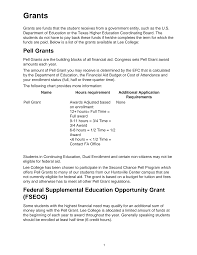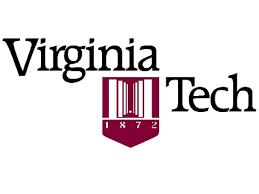
It can be challenging to learn middle school math skills. You can help your child learn essential skills by using a few games. These games will help your child learn how to use fractions and decimals. These games can be used to reinforce key math skills and have fun.
The 24 Game is a simple card game that teaches multiplication and division. The game also includes negative and positive integers as well as algebraic and exponents. The cards must be laid face down before the game can begin. Each player chooses four cards. The goal is to create 24 cards by multiplying them.
The Exponent Battle is another game that helps children learn math by solving problems. The cards are turned face down by students who use their math knowledge in order to determine which cards go. Each player is given one card that has an exponent. Each player is given a card with an exponent. The next card is used for the calculation of each player's exponent. The game's winner is the one that solves the math problem the fastest.

This fun math game is for all ages. This quick math game is fun for both one and two players. Playing the game with large objects like a table can make it more difficult.
You might want to play a measurement game if you have a larger number of children. To make it more difficult, this game uses subtraction and fractions. It can be played with precision of eight inches. It can be used to match the lengths larger objects. This is a great choice for larger families.
Another game students can use to learn decimal pairings is Learning Decimal Matching. It helps students to be creative, and it gives them a hands-on way to work with math concepts. Students learn to match fractions and decimals in this game.
For students who want to learn more about percents, you can try the Percent Math Game. This game uses a deck of cards to help students learn how to multiply numbers by a specific percentage. They will also learn about percents of different numbers like percentages or percentages.

Learning Decimal Pairing can be used to help middle school students grasp decimals more clearly. The game is played in teams. The first player is dealt a card containing a base figure, while the second player receives one with an exponent. The correct answer is the one that must be voted for, while the incorrect answer must be retracted. This game can be played in small groups.
A scavenger hunting is a great way to get everyone involved. Students will learn to work with coordinates, slopes, and coordinates. Students will also learn how to graph coordinates. Tic-Tac Toe, a board game, can be used to teach math skills. You can play this game with a group of two to four people and in many different ways.
FAQ
What are the factors to consider when choosing a major
First decide whether you'd rather be a professional or a student first. First, make a list about your interests and talents. Reading, listening to music and talking to people are all possible interests. You can be a singer, dancer, painter, writer, sewer, cook, woodwork, garden, photography, carpentry or auto mechanics. Once you have identified your interests and talents, you can use them as guides when selecting a major.
Fine arts or art history might interest you if your dream is to be an artist. Biology may appeal to those who love animals. If you'd like to become a doctor, you might look at pre-medicine or medical technology. Computer science or computer networking might be a good choice if you are looking for a career that involves computers. There are many possibilities. Be clear about your goals.
How do I select my major?
Students choose their majors by their interests. Some students will choose to major or minor in a subject that interests them because they'll find it more enjoyable than learning about something else. Others are interested in a career where there are few jobs. Others choose a major to make money while they study. Whatever your reasons, you should consider what kind of job you might like after graduation.
There are many options for information on different areas of study. You could talk to someone in your family or friends about their experiences in these areas. Look through newspapers and magazines to find out what careers are available. Ask your guidance counselors at your high school for information about possible careers. Visit Career Services at the local library or community centre. Get books on different topics at your local library. Search the Internet for specific career-related websites.
How long does it take for an early childhood teacher to become certified?
The bachelor's degree program in early childhood education takes four years. Two years are required to take general education courses offered by most universities.
After you have completed your undergraduate education, you can usually apply to graduate school. This step allows for you to specialize in one area of study.
You could, for example, choose to study learning disabilities or child psychology. After completing your master's you will need to apply to a teacher training program.
This process may take another year. This period will be filled with learning opportunities and collaborations with educators.
Final, you must pass the state exam before you can start teaching.
This process can take many years. Therefore, you won't immediately be able jump into the workforce.
What is vocational school?
Vocational school programs are designed to prepare individuals for specific jobs. They might also offer general education courses or training in the skills that employers require.
Vocational education plays an important role in our society, as it helps young adults develop the skills needed to succeed in everyday life. It ensures that all students have access to high-quality learning opportunities.
A vocational school provides a variety options for its students. They can choose from certificates, diplomas or degrees as well as apprenticeships, certificates, diplomas or degrees. Vocational schools provide both academic and practice-oriented subjects such as math and science, English and social studies.
How much does homeschooling cost?
Homeschooling does not require you to pay a set fee. Some families charge between $0-$20 per lesson. Other families offer free services.
But homeschooling is not easy. It requires commitment and dedication. Parents should have enough time for their children.
Access to books, materials, and other learning aids is essential. Many homeschoolers have to make use of community programs and events in order to enhance their curriculum.
Parents should think about transportation costs, tutors, and other activities.
In addition, homeschoolers must plan ahead for field trips, vacations, and special occasions.
Do you think it is difficult to be a teacher
You must be a teacher. You will need to give a significant amount time to your studies.
While completing your degree, you can expect to work approximately 40 hours per week.
You will also need to find a job that suits your schedule. Many students report difficulty finding part-time jobs that work around their school schedules.
After you have been offered a permanent position, you will be expected to teach classes throughout the day. Sometimes, you may need to travel to other schools during the week.
Statistics
- They are more likely to graduate high school (25%) and finish college (116%). (habitatbroward.org)
- And, within ten years of graduation, 44.1 percent of 1993 humanities graduates had written to public officials, compared to 30.1 percent of STEM majors. (bostonreview.net)
- These institutions can vary according to different contexts.[83] (en.wikipedia.org)
- “Children of homeowners are 116% more likely to graduate from college than children of renters of the same age, race, and income. (habitatbroward.org)
- Among STEM majors, that number is 83.5 percent. (bostonreview.net)
External Links
How To
what is vocational education?
Vocational education prepares students for the workforce after high school. Students are trained in specific skills to be able to do a particular job such as welding. This includes apprenticeship programs and on-thejob training. Vocational education stands out from general education. This is because it focuses less on general knowledge and more on developing skills for specific occupations. Vocational education's goal is to help students find employment after they graduate.
Vocational education is available at all levels of education, including primary, secondary, high school, college, universities, technical institutes as well as trade schools, community colleges and junior colleges. In addition, there are many specialized schools such as culinary arts schools, nursing schools, law schools, medical schools, dental schools, veterinary medicine schools, firefighting schools, police academies, military academies, and other military schools. Many of these offer both academic instruction, and practical experience.
Over the past decade, a number of countries have made substantial investments in vocational education. These include Australia, Denmark and Finland, Germany. The effectiveness of vocational education is still controversial. Some critics claim it is not effective in improving students' employability. Others argue that it helps them prepare for life after school.
The U.S. Bureau of Labor Statistics has estimated that 47% of American adults hold a postsecondary certificate or degree related to their current occupation. This figure is higher for those with more education. 71% (25-29) of Americans have a bachelor's level or higher and work in fields that require a postsecondary degree.
The BLS reported in 2012 that almost half of all adults had some type of postsecondary credential. About one-third of Americans held a two-year associate degree, while about 10 percent held a four-year bachelor's degree. One fifth of Americans had a masters degree or doctorate.
The median annual wage for individuals with a bachelor's in 2013 was $50,000. This was compared to $23,800 when they had no degree. For those with advanced degrees, the median wage was $81,300.
The median wage for those who didn't complete high school was $15,200. Those with less than a high school diploma earned $13,000 per year.